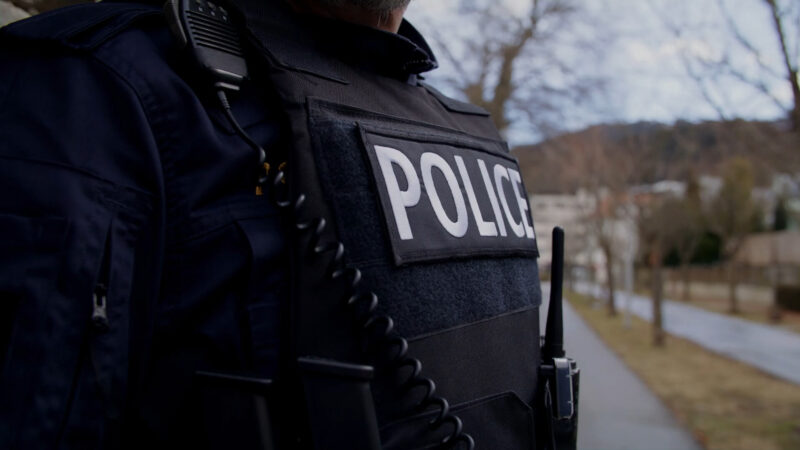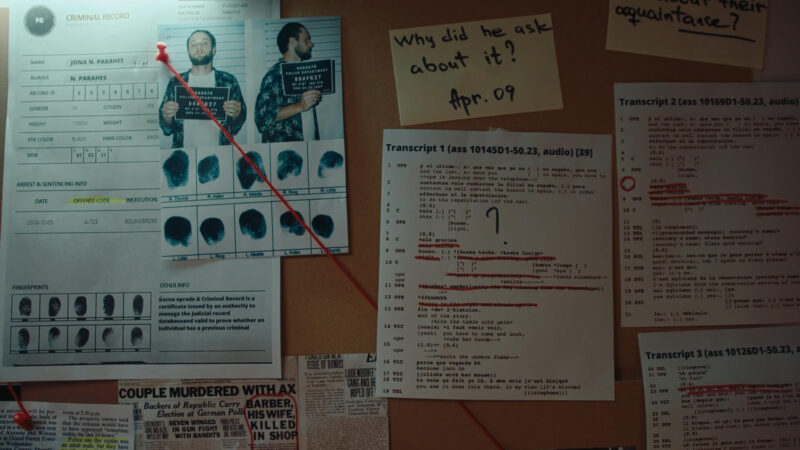Police work involves a unique language that might sound like a foreign tongue to most people. Knowing these terms is not just useful for those in the force, but also for anyone looking to understand the justice system better.
In this article, we will walk you through 50 common police terms you should know.
1. 10-Codes

10-4: Affirmative or OK. One of the most recognized codes, it confirms understanding.
10-20: Location. This asks an officer’s current position.
10-8: Available for calls. This code indicates that an officer is ready to respond to a call.
2. APB (All-Points Bulletin)
An alert issued by law enforcement to notify other agencies about a dangerous suspect or missing person.
3. Miranda Rights

The rights read to a suspect upon arrest, ensuring they know their legal protections:
- Right to remain silent.
- Anything said can be used in court.
- Right to an attorney.
- An attorney will be provided if they can’t afford one.
4. Cuff and Stuff
Slang for arresting someone, typically involving handcuffing and placing them in a patrol car or jail.
5. Beat or Walking the Beat
Refers to a police officer’s patrol area. It’s derived from “the beaten path,” indicating the familiar route an officer takes.
6. Subpoena
A legal document ordering someone to attend court or produce documents. It ensures the presence of witnesses or submission of evidence.
7. DUI (Driving Under the Influence)
Refers to operating a vehicle while impaired by alcohol or drugs, a serious offense that endangers public safety.
8. CompStat
A management tool used by police departments to track crime statistics and police activity, holding officers accountable and deploying resources effectively.
9. LEO (Law Enforcement Officer)
A general term for officials who enforce laws, including police officers, sheriffs, and federal agents.
10. Code Blue
Indicates a medical emergency, requiring immediate medical response, often used in hospitals but sometimes in police work.
11. Domestic Violence (DV)
Refers to physical assault by one household member on another, a common call for police intervention.
12. Suspect
The person believed to have committed a crime. Officers gather evidence and information to identify and apprehend the suspect.
13. Perpetrator (Perp)
A person who has committed a crime. This term is often used interchangeably with suspect but can imply more certainty of guilt.
14. Probable Cause
The legal standard by which officers have reason to believe a person should be arrested or a property searched.
15. Search Warrant
A legal document authorizing a police officer to enter and search premises. It’s issued by a judge based on probable cause.
16. Hot Pursuit

When police officers chase a fleeing suspect. This often involves high-speed driving and quick decision-making.
17. Stakeout
Surveillance of a location or person to gather evidence or catch a suspect in the act. Officers remain hidden and observe activities.
18. Undercover
When an officer disguises their identity to gather information or evidence on criminal activities without being recognized as law enforcement.
19. Sting Operation
A deceptive operation designed to catch a person committing a crime. Officers set up a situation where the crime can occur and then apprehend the suspect.
20. SWAT (Special Weapons and Tactics)
A specialized unit equipped to handle high-risk operations such as hostage rescues, counter-terrorism, and armed confrontations.
21. Booking
The process of recording an arrested person’s information, including fingerprints, photographs, and personal details, into police records.
22. Mugshot

A photograph of a person’s face taken for police records after they are arrested.
23. Evidence
Any material item or information used in court to prove guilt or innocence. This includes physical objects, documents, and witness testimony.
24. Interrogation
The formal questioning of a suspect or witness by law enforcement to gather information about a crime.
25. Lineup
A process where a witness identifies a suspect from a group of people. It’s used to confirm the identity of a suspect.
26. Alibi
A claim that a suspect was elsewhere when a crime occurred. It can be verified by witnesses or evidence.
27. Confession
An admission of guilt by a suspect, often obtained during an interrogation.
28. Informant
A person who provides information to law enforcement about criminal activities, often in exchange for leniency or other benefits.
29. K-9 Unit

Police units that use trained dogs for tasks such as searching for drugs, explosives, or suspects.
30. Patrol
The regular activity of monitoring a specific area to prevent and respond to criminal activity.
31. Detention
Holding a person in custody, often temporarily, while determining if they should be charged with a crime.
32. Citation
A legal notice issued by a police officer, typically for minor offenses like traffic violations, requiring the recipient to appear in court.
33. Felony
A serious crime, usually punishable by more than a year in prison. Examples include murder, rape, and armed robbery.
34. Misdemeanor
A less serious crime, punishable by less than a year in jail. Examples include petty theft and minor assaults.
35. Arraignment
The court hearing where a suspect is formally charged with a crime and enters a plea of guilty or not guilty.
36. Bail
A monetary amount set by the court to ensure a suspect returns for their trial. If the suspect cannot pay, they remain in custody.
37. Bond
A sum of money paid to release a suspect from custody until their trial. If they fail to appear in court, the bond is forfeited.
38. Remand
To send a suspect back into custody, often used when a judge believes the suspect is a flight risk or danger to the community.
39. Forensics
The use of scientific techniques to investigate crimes and gather evidence. This includes DNA analysis, fingerprinting, and blood analysis.
40. Crime Scene

The location where a crime occurred, preserved for the collection of evidence.
41. Surveillance
Monitoring the activities of suspects or locations to gather evidence or prevent crimes.
42. Wiretap
The electronic monitoring of phone calls or other communications, often used in investigations to gather evidence.
43. Bug
A covert listening device placed in a location to monitor conversations and gather evidence.
44. Alias
A false name used by a suspect to conceal their identity.
45. Modus Operandi (MO)

The characteristic method of operation of a criminal, used to identify patterns and link crimes to a specific suspect.
46. Witness
A person who saw or has information about a crime. Witnesses provide crucial evidence in investigations and trials.
47. Testimony
A formal statement given by a witness under oath in court, used as evidence in a trial.
48. Parole
The conditional release of a prisoner before the end of their sentence, based on good behavior and other factors.
49. Probation
A court-ordered period of supervision in the community, often used as an alternative to imprisonment.
50. Warrant
A legal document authorizing police to take specific actions, such as arresting a suspect or searching a property.
FAQs
What is the difference between an Arrest and a Detention?
An arrest involves taking a person into custody with the intent to charge them with a crime. Detention, on the other hand, is a temporary holding of a person to determine if there is enough evidence to make an arrest. During detention, a person is not free to leave, but they have not been formally charged with a crime.
What does “Booking” involve?
Booking is the process of formally recording an arrested person’s entry into police custody. This includes taking their photograph (mugshot), recording their personal details, taking fingerprints, and documenting the charges against them. It’s a crucial step in the criminal justice process to ensure all information is accurately recorded.
What is Bail and how does it work?
Bail is a set amount of money that acts as insurance between the court and the person in custody. Defendants can pay bail in cash or through a bail bond. Bail allows the defendant to be released from jail until their court date, ensuring they return for trial. If the defendant fails to appear, the bail amount is forfeited, and they may be remanded into custody.
What is the role of a Parole Officer?
A parole officer supervises offenders who have been released from prison on parole. Their job is to help parolees reintegrate into society while ensuring they comply with the terms of their release. This includes regular check-ins, drug testing, and assistance with finding employment and housing.
Last Words
Police terminology helps officers communicate efficiently and maintain order, and knowing these terms can enhance your awareness and interactions with law enforcement. From legal processes to on-the-ground operations, these terms form the backbone of police work.

